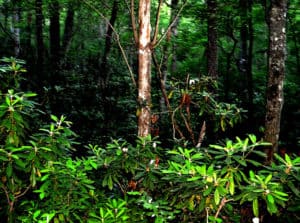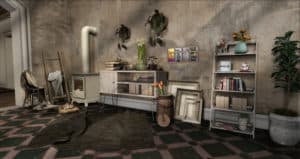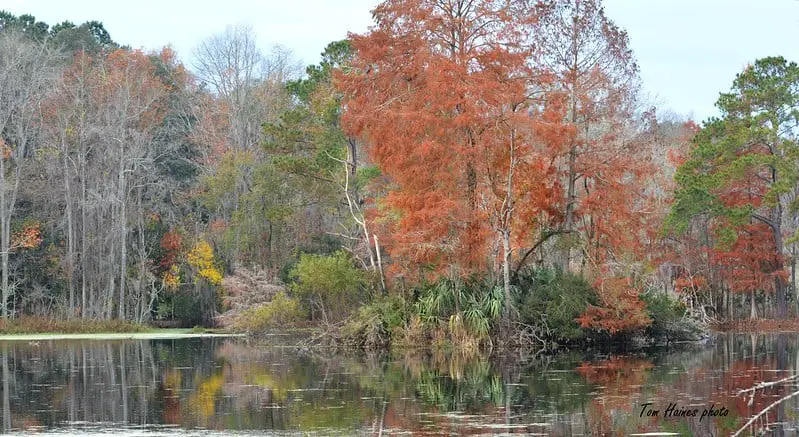
When running out of logs and don’t have a lot of wood options to choose from, you are more likely to buy or chop any available option to warm your home.
One of the few options you might have is Magnolia wood.
It is a common wood in most parts of North America and there’s a chance you’ve already thought of giving it a shot.
Is Magnolia Firewood Good For Your Wood Stove?
In one word – “Yes.” It’s perfectly OK to obtain a few Magnolia chips for your stove although it is not the kind of wood anyone would strongly recommend. Why is it not recommendable?
1. Lightweight
Firstly, this wood is remarkably lightweight. Ask even the least knowledgeable person with stoves and they’ll advise you to always go for the heaviest wood you could find.
And that’s for an obvious reason – heavy woods last longer in the oven and saves you some money. So, Magnolia wood wouldn’t be the best choice if you’re looking forward to getting more heat for longer and saving a few bucks.
2. Amount Of Heat Produced
Secondly, there’s the issue of the amount of heat generated per given weight. Of course, you’d expect a lightweight wood to produce less heat because of the low density – that’s exactly the case with Magnolia wood.
Although this tree is technically grouped as a hardwood, the characteristics say an entirely different story – the wood isn’t particularly very dense like real hardwoods and is even more lightweight than the oak, beech, and maple tree.
You can bet it will be the fastest burning hardwood you’ll ever try.
However, just because this wood is not the “most preferable firewood” out there does not mean you can’t or should not burn it.
It only means you should not expect it to burn as long or produce as much heat as other types of firewood.
What Is Magnolia Tree, to begin with?
- Magnolia trees are natives of the southern United States. They are normally planted in this region as ornamental trees.
- The leaves of this tree are very distinct as a result of their thick leathery texture and deep green color and thick. Also, the tree stands out with its large fragrant white flowers that bloom during the summer.
- It is an evergreen tree that is adaptable to a range of soil conditions. It normally grows to an average height of 60 – 90 feet.
- The wood is gray or creamy white in color and is valued for its beautiful pieces of interior trim and veneer. It is also used to produce general utility wood that can be used in other woodworking projects such as crates, plywood, and even baskets.
Firewood Use

As mentioned earlier, Magnolia wood is good for your wood stove if you don’t care about the intensity of the heat and the replenishing frequency.
If you must use it, then the best time to shove a few of its pieces in your stove would be during the spring or fall when the temperatures are mild outdoors.
Just like most other types of firewood, make sure your Magnolia pieces are well seasoned before adding them to the oven.
Since it is not a very dense wood, it burns quickly and will not display impressive coaling qualities. It burns hot enough for normal warming needs and can work well for starting morning fires or mixed in with a few other high-quality hardwoods.
There’s nothing unique about Magnolia wood. It is similar to burning poplars or white birch – just another average firewood choice.
So, if Magnolia wood is the only firewood available to you, there is no good reason you should turn it down more so if it is free. However, if you have access to a decent wood that will produce great heat and burn longer, just stay away from it.
With all that said about Magnolia wood, there are a few other kinds of wood you should strictly never burn in your oven. Here are some of them.
Green Wood
When any living tree is fell, the produced timber need be left alone to “season” or age for utmost 6 to 9 months before burning in the stove.
Freshly cut wood, or green wood, comes loaded with soggy saps (mostly water) and should be left to dry out before use.
It is hard to light green wood but once you dry it, it lights up faster and burns very efficiently with very little or no smoke.
If you are unsure whether your wood is still green or ready for the job, don’t hesitate to ask your wood provider when it was harvested.
You can also go ahead and check the bark yourself: firmly attached bark that is still sticky with fresh sap when you pinch or cut it is a clear indicator the wood isn’t ready yet for your oven.
Big Wood
Do not buy firewood that is too long or oversize to easily fit inside your oven, fire pit, or fireplace.
If it is more than 5” in diameter, take your time to slice or split it further before you can even think of using it.
Non-Local Woods
If your home is located in a region affected by any invasive woodlice or similar pests, or you’re visiting such an area, remember to ask your wood provider where they obtained their wood. If it was cut or stored more than a few miles off your home, you should shelf the idea of buying it and keep looking for better and safer wood.
According to the advice of Leigh Greenwood, the campaign manager at Don’t Move Firewood Campaign, wood that travels way too far from its harvesting grounds tend to carry diseases and invasive insects with it and can rapidly spread them over a large geographical area, causing devastating effects on local trees.
Some of the top species often spread in this manner are emerald ash borers, Asian long-horned beetles, and gold-spotted oak borers.
Though these pests typically travel slowly when migrating on their own, relocating an infected piece of wood can put forests in a danger and undermine the much-need conservation efforts.
Many trees or different species covering thousands of acres have been killed or seriously damaged by non-native invasive pests.
New outbreaks often start in or close to public campgrounds but sometimes link back to specific homeowners who bought oven wood from an infested forest elsewhere.
Soft Wood
Remember to ask your wood provider about the kind of wood they are supplying to you.
Trees like cypress, firs, and pines, have “soft” wood, meaning they burn fast and leaves few coals.
They are also known to produce plenty of smoke that may ruin your chimney with a sooty coat.
Seasoned softwood is perfectly OK for outdoor settings.
Driftwood
Stay away from driftwoods at all costs. Driftwoods usually contain years’ worth of soaked salt in them.
According to EPA, burning salt-saturated driftwoods can release harmful or toxic chemicals when burned.
It is probably safe to use the beach wood for mounted planters and decor instead.
Poisons
Vines are one of the top sources of poisons. Watch out for wood covered with any vines.
Burning hemlock, poison oak, poison ivy, and poison sumac, or pretty anything else with the word “poison” anywhere in its name will most likely release irritant oils such as urushiol into the air.
Breathing this smoke can cause some irritations in your lungs and even cause severe allergic respiratory reactions, says CDC (Centers for Disease Control).
Oleander
Oleander shrubs are a common sight in temperate frost-free climates.
These nice-looking plants are also when ingested or their smoke inhaled.
Definitely don’t burn Oleander shrubs or make them part of your wood. Also, don’t use their branches to toast your marshmallows on.
Endangered Species
American chestnut, Blue ash, and Kentucky coffee trees – these are just three of the most endangered woods in North America.
There are over 20 endangered native trees in the region, and by their rareness, you are unlikely to bump into their batch of firewood on sale.
However, some sellers are unaware of this list or may sell them anyway, illegally.
That’s why you should remember to double-check this list before buying or chopping down any wood for yourself.
In a Nutshell
Is magnolia wood perfect for your wood stove?
Absolutely, you are good to obtain a few Magnolia chips for your stove although it is not the type of wood anyone would strongly recommend unless you’ve run out of all options.
Magnolia wood wouldn’t be the best choice if you’re looking forward to getting more heat for longer and saving some money because it is lightweight and burns faster even though it is classed as a hardwood.
Secondly, there’s the issue of the amount of heat generated per given weight – Magnolia wood releases less heat per unit weight compared to most other hardwoods.
There are a few other kinds of wood you should strictly never burn in your oven.
- Avoid using green wood or wood that hasn’t dried yet.
- Poisonous plants tend to release toxic fumes when burned, so stay away from that kind of wood as well.

